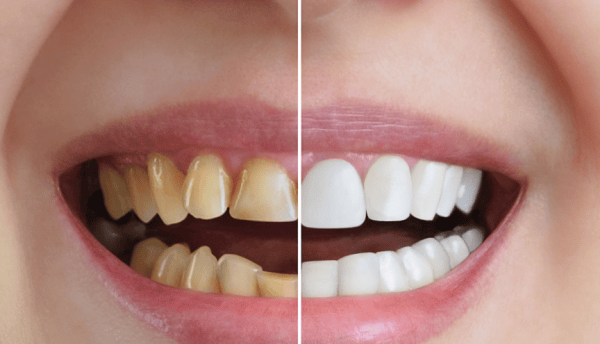How Fluoride Protects Your Teeth
SMILE SMART READS
11/11/20244 min read


What is Fluoride and How Does it Work?
Fluoride is a naturally occurring mineral found in various environmental sources, including soil, water, and certain foods. It exists in several forms, with its most recognized form being fluorine, a highly reactive element. Within the context of dental health, fluoride is extensively used for its protective qualities against dental caries (cavities). As an essential component in many toothpaste and mouth rinse products, fluoride contributes significantly to oral hygiene practices.
The biochemical mechanisms underlying fluoride's benefits to teeth center around its capacity to strengthen dental enamel. When fluoride is introduced to the mouth, it interacts with the hydroxyapatite crystals that make up tooth enamel. This interaction leads to the formation of fluorapatite, which is more resistant to demineralization caused by acid attacks from dietary sugars and bacteria. As a result, the teeth become less susceptible to decay.
A vital aspect of the process of remineralization, where minerals are deposited back into the enamel, is enhanced by fluoride. During this process, fluoride acts by attracting calcium and phosphate ions, which are critical for enamel health. Saliva plays a crucial role in this dynamic; it not only helps in the natural remineralization process but also serves to deliver fluoride as it contains various minerals beneficial for oral health.
Moreover, fluoride has the capacity to inhibit the activity of plaque bacteria by reducing their ability to produce acid. This attenuation of acid production can significantly decrease the risk of tooth decay. Incorporating fluoride into daily oral care routines, alongside regular dental check-ups, can serve as an effective strategy for maintaining strong, healthy teeth while reducing the incidence of cavities.
Benefits of Fluoride for Dental Health
Fluoride has been widely recognized for its numerous benefits in promoting dental health and preventing oral diseases. One of the primary advantages of fluoride is its ability to significantly reduce the risk of cavities and tooth decay. Through a process known as remineralization, fluoride aids in repairing the early stages of tooth enamel demineralization, reversing potential damage before significant decay occurs. This process strengthens enamel, making it more resistant to acid attacks from bacteria present in the mouth.
In addition to its protective properties, fluoride also plays a crucial role in combating the harmful effects of bacterial acids. When sugars are consumed, bacteria in the mouth produce acids that can erode tooth enamel. The simultaneous presence of fluoride can inhibit this acidogenesis, effectively lowering the rate of cavity formation. Regular exposure to fluoride, whether through toothpaste, mouth rinses, or community water fluoridation, creates a protective barrier around the teeth and helps maintain a healthy oral environment.
Moreover, the benefits of fluoride are particularly significant in children's dental development. During the formative years, the incorporation of fluoride into developing teeth can enhance their strength and durability. Children who receive adequate fluoride exposure are less likely to experience cavities, contributing to better dental health as they grow. For adults, long-term fluoride use offers ongoing protection against cavities and helps preserve their natural teeth well into later life.
In conclusion, the multifaceted advantages of fluoride for dental health highlight its indispensable role in cavity prevention, enamel remineralization, and overall oral hygiene. From childhood through adulthood, fluoride remains a vital component in maintaining strong, healthy teeth.
Fluoride Sources and Application Methods
Fluoride is a vital mineral that supports dental health through various sources and application methods. Its natural presence in water and specific food items plays a key role in oral care. Community water supplies often contain fluoride, enhancing tooth enamel and reducing the likelihood of decay. The optimal fluoride concentration in drinking water is generally considered to be around 0.7 parts per million, as per guidelines set by health organizations. This naturally occurring fluoride can significantly benefit those who may not have access to regular dental care.
In addition to natural sources, fluoride is commonly found in dental products such as toothpaste and mouth rinses. Most toothpaste formulations contain fluoride, offering an effective means to strengthen enamel and deter cavities. For adults and children over the age of six, using fluoride toothpaste twice daily is recommended. Mouth rinses designed for fluoride delivery can supplement this routine, providing an additional protective layer and aiding in the prevention of dental caries. It is important to follow the manufacturer's guidelines regarding the age of use and frequency of rinsing to ensure safety and efficacy.
Furthermore, professional fluoride treatments present another means to augment fluoride exposure, particularly for individuals at higher risk for dental issues. These treatments, which include fluoride varnishes and gels, are typically applied by dental professionals in a controlled environment. The application of these products can be customized based on individual needs, with recommendations generally suggesting treatment every three to six months. Understanding the correct usage and frequency of fluoride sources is essential for maximizing its protective benefits, ensuring comprehensive dental health for both children and adults.
Controversies and Considerations Regarding Fluoride Use
The use of fluoride in dental care is a subject of ongoing debate within the health community. While fluoride is widely recognized for its role in strengthening tooth enamel and preventing cavities, concerns have arisen regarding its potential side effects, particularly dental fluorosis. This condition, characterized by white spots or streaks on the teeth, is primarily associated with excessive fluoride exposure during childhood, when teeth are still developing. The emergence of fluorosis led many to question the safety and efficacy of fluoride treatments.
Numerous studies have been conducted to examine the potential risks associated with fluoride use. Some proponents of fluoride argue that when used appropriately, the benefits in preventing tooth decay far outweigh the risks. For example, community water fluoridation has been linked to a significant reduction in cavities across populations. However, critics highlight the lack of informed consent, as many individuals do not have a choice regarding their fluoride exposure through public drinking water.
Scientific consensus indicates that while fluoride is beneficial in moderation, excessive intake may pose risks. Thus, guidelines recommend limiting fluoride exposure for young children, particularly regarding toothpaste use. Parents are encouraged to supervise brushing habits and to use only a small, pea-sized amount of fluoride toothpaste to minimize ingestion.
For those who wish to limit their fluoride intake while maintaining dental health, alternative approaches can be considered. These include adopting a balanced diet rich in vitamins and minerals, utilizing fluoride-free dental products, and practicing good oral hygiene. Regular dental check-ups and cleanings also play an essential role in ensuring strong dental health without relying solely on fluoride treatments.
